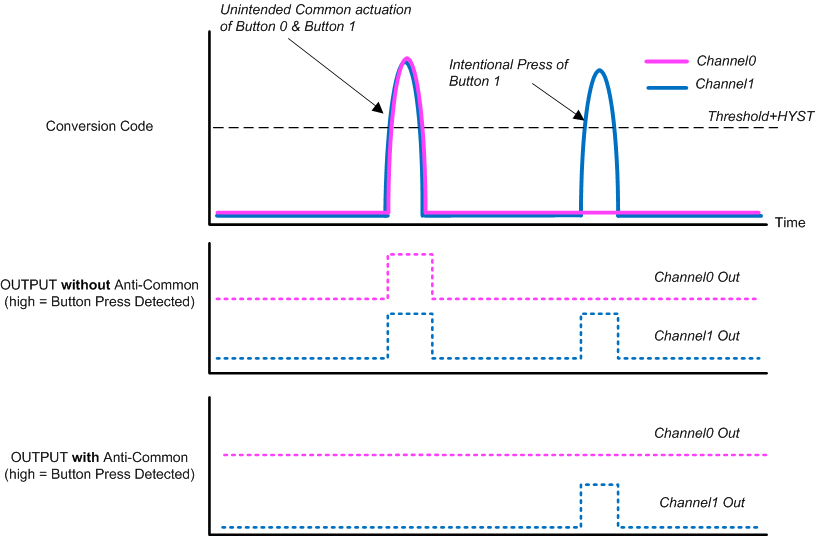SNOA993A June 2018 – July 2021 LDC2112 , LDC2114 , LDC3114 , LDC3114-Q1
7.2 Anti-Common Mode
Anti-Common Mode corrects for unintended mechanical deflection which is common to multiple buttons. Figure 7-2 provides a comparison between having Anti-Common enabled vs. disabled for an example stimulus.
 Figure 7-2 Anti-Common Functionality
Figure 7-2 Anti-Common FunctionalityButtons can be included in the Anti-Common group by setting the corresponding ANTICOMx field to 1. The default setting for the ANTICOMx field is 0, which disables Anti-Common for corresponding channel. The pseudo-code for this algorithm is equivalent to:
ACM_offset = (∑net[channel] )/num_acm_chan
For each (channel with enabled ACM)
net[channel] = net[channel] – ACM_offset
Next channel
Note that the Net output value readback from the LDC211x is changed by the use of this algorithm.